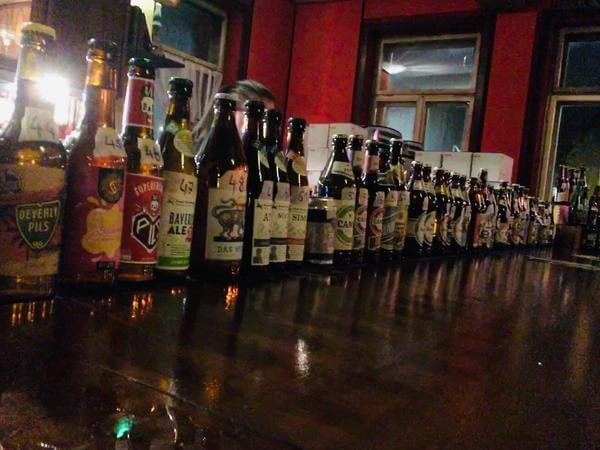How many ingredients are there in your business?
Restricted by the German purity law, German brewers can only use four ingredients – malt, hops, yeast, and water. There are only so many combinations and yet there are thousands of different beers, so how do they do it?

Brewers are considered to be great chefs. As with all chefs, they take great care in selecting the perfect blend of materials, the precise variety of hops from a preferred region that delivers the flavour they want to achieve. A specific yeast that’s been cultivated from a centuries-old wild variety rediscovered in an old oak tree. Then you come to the brewing technique, which is equally important as the ingredients and sometimes the main reason the beer stands out.

Which means that along with carefully selecting the mix of ingredients, brewers need to analyse the production methods. The huge variety of beer stands testament to how successful this is.
Each beer is unique and now you know that it’s down to slight variations in the ingredients and process, you realise how much effort must have gone into brewing your favourite tipple. Let’s raise a glass to that, Prost!
What makes you different?
When it comes to your business, how different are your ingredients to your competitors?
Perhaps not much, if you’re honest. But as we all know, it’s what you do with them that counts and the subtle changes are exactly what will generate different results.
Two companies could deliver the exact same product at a similar price point and yet one is wildly more popular than the other because their clients love the sustainable packaging and extra attention to detail. Or the fact they receive a hand-written note and free sample with each order. Maybe it’s just because they know they can reach a living, breathing human at the end of an email or phone call rather than be pushed around an automated system that makes them want to scream in frustration.
And to consider another factor. When you invent new beer formulations using different types of yeast, you face new challenges. Process steps need adjusting, there are new microbiological risks.
Just the same as when you launch a new product or service, it may need tweaking to suit your clients’ requirements. If it doesn’t work straight away, you don’t throw away all that hard work and preparation, you see what else you can do to make it work.
Try an experiment
Think of your business as an experiment. A very hard-working, successful experiment of course.
Let’s say you consider little tweaks and adaptations to be part of the experimental design. You measure the results and conclude whether you took the best course of action or if you can spot any scope for improvement. Thinking about your marketing campaigns and product launches in this way makes you a lot less attached to the outcome.
And if you’re less attached to the outcome, you’ll be more open to improvements and new ideas, which can only get you and your customers better results.
Sometimes when you’re dealing with different cultures (and I’m talking about humans now not yeasts), you make assumptions. A problem a client has in Germany might not be focus of your client in Croatia or Britain, which means your marketing might be slightly off if you try to appeal to both domestic and international clients. Your perspective isn’t wrong, you’re just not talking about their biggest concern so you’re not capturing their attention. Get some input from your target market and adjust accordingly, try a new angle to get a better outcome.
How about trying something new today? Send me some English marketing that you’ve put out in public but doesn’t seem to be striking the right note, and I’ll suggest some tweaks to generate more leads. I’m not going to suggest a wildly different approach (unless you want me to that is). Usually a subtle change of focus from the perspective of a native speaker and a few different word choices can make the difference between a reader wanting more or moving on to a different brand. Once the figures come in, then we can toast to your success!


